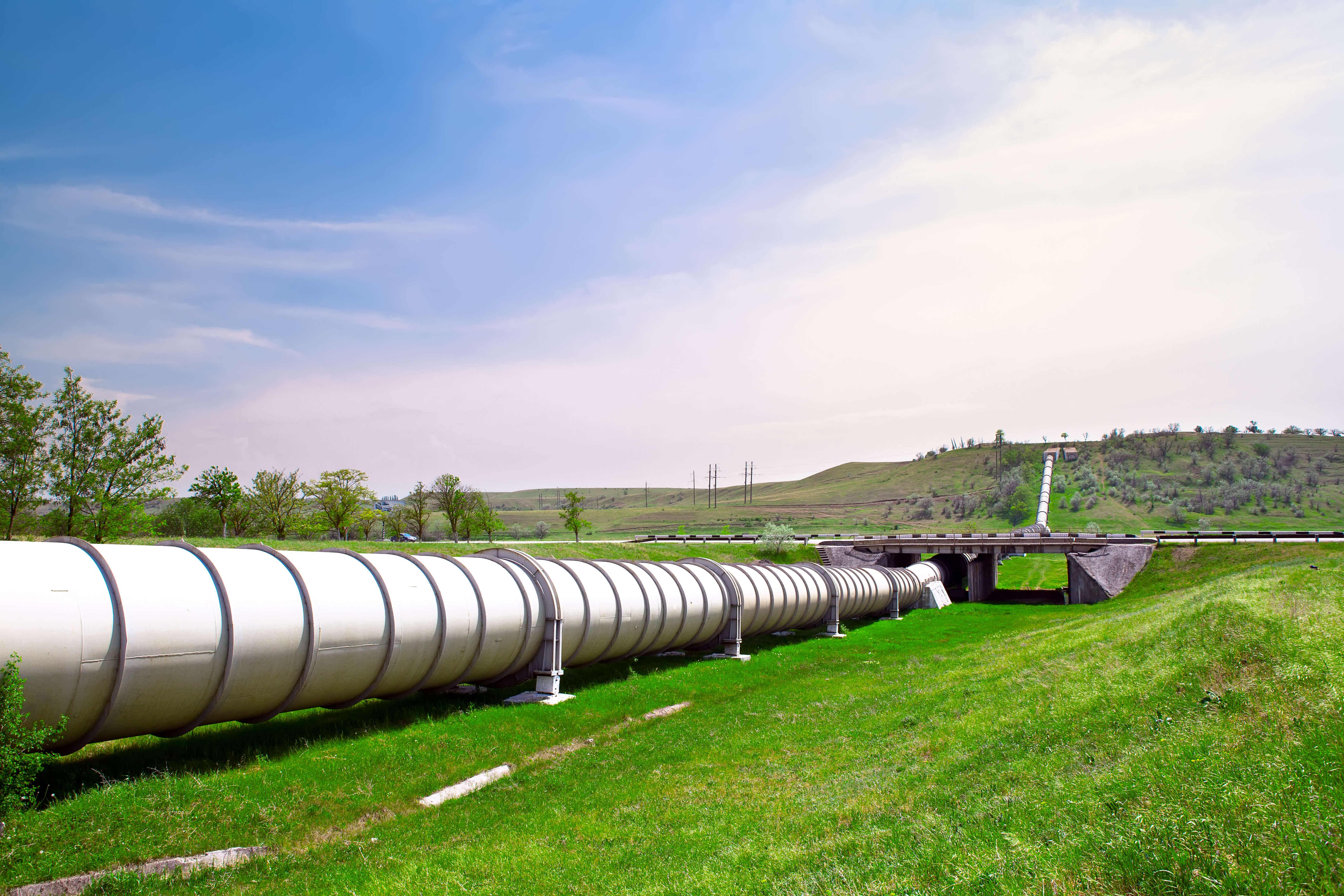INGAA President on the State of Pipeline Development
 At our upcoming North American Gas Forum, energy leaders will be discussing the movement and direction of gas in energy markets. One topic central to this conversation is the expansion of natural gas pipeline infrastructure and how FERC proceedings will affect the development of major new projects. For an insider perspective about the state of pipeline development and opposition to particular projects, we called upon Donald Santa, President at the Interstate Natural Gas Association of America, the North American association representing the interstate and interprovincial natural gas pipeline industry.
At our upcoming North American Gas Forum, energy leaders will be discussing the movement and direction of gas in energy markets. One topic central to this conversation is the expansion of natural gas pipeline infrastructure and how FERC proceedings will affect the development of major new projects. For an insider perspective about the state of pipeline development and opposition to particular projects, we called upon Donald Santa, President at the Interstate Natural Gas Association of America, the North American association representing the interstate and interprovincial natural gas pipeline industry.
Donald has held highly regarded positions in addition to his current role, including as a majority counsel to the U.S. Senate Committee on Energy and Natural Resources, member of the Federal Regulatory Commission, Senior VP of Strategic Planning at LG&E Energy Corp, and partner at Troutman Sanders LLP. Here’s what Donald Santa, President at INGAA, had to share with us prior to his upcoming presentation at this year’s North American Gas Forum:
ED: What’s the current state of natural gas in the US?
DS: The shale boom, which we’re now about a decade into, has caused major changes, both in terms of the role of natural gas in the US energy economy and the resulting need for gas pipeline infrastructure. We have gone from a situation where a little more than a decade ago, the assumption was that North American natural gas supply, and by that I mean continental US and most of the Canadian supply, had stagnated, that we would become increasingly dependent upon imported LNG and that perhaps the only new North American supply would be coming from the Arctic.
The shale boom has changed that dramatically. Because of this abundance, gas is now remarkably affordable. It has contributed to increasing use of gas for electric generation. It has contributed to an industrial renaissance in some places, because natural gas is an important input for manufacturing processes. It has put a lot of money in American consumers’ pockets in terms of their lower natural gas heating bills and, for that matter, even electricity bills. And, pretty remarkably, we have gone from a position of being an importer of natural gas to now looking at being an exporter of natural gas, and exports are viewed as one of the biggest growth markets for US domestic production.
ED: How is the change in supply of natural gas impacting energy infrastructure?
DS: One of the major reasons that natural gas supply has impacted infrastructure is due to the Marcellus and Utica Shales, which are located in the Northeast-Midwest. Those were areas that, at least in recent history, had not been producing a lot of oil and gas. The emergence of these new supplies necessitated effectively re-plumbing the pipeline system to connect those supplies and take them to the market. The thing that’s probably been the biggest surprise is that those supplies have been so prolific that they’re supplying more than the markets in their region. For example, we’re having gas from the Marcellus taken to the Southeast for electric generation, and taken to the Gulf Coast for export in the form of LNG. There have been some really major changes in gas flows, and that necessitated both repurposing existing pipe, and in many cases, building brand new pipe.
The newest development is the Permian, which is driven much more by oil production, but there’s associated gas there too. That associated gas is located relatively close to the export markets, whether it’s pipeline exports to Mexico or piping that gas to the Gulf Coast for export in the form of LNG.
ED: What can you share with us about the bottlenecks and the challenges in the future of the developments?
DS: There remain bottlenecks in certain places. One that is most apparent is New England. Even though it is only several hundred miles away from the heart of the Marcellus supply, the challenges of expanding pipeline infrastructure into New England are great. As a result, when it gets cold, prices tend to spike there, and that affects not only natural gas consumers, but electric consumers. The gas-fired generation in many cases sets the market-clearing price. (During some of the winter, the electricity price often is set by fuel oil, simply because there is insufficient pipeline capacity to get enough gas into the region to satisfy peak demand for both space heating and electric generation.) Also, we’re seeing some bottlenecks in terms of infrastructure, both gas, oil, and natural gas liquids, catching up with the pace of development of the Permian.
It is much more challenging to build pipelines today, because of increased opposition to pipelines. Those who would like to see a much more rapid transition to a decarbonized energy economy have focused on opposing pipelines, with the thought being that if they can frustrate the conduits that get gas to the market, they can curb the growth of gas markets.
These opponents have been very, very resourceful. They engage in public protest and litigation. One of the challenges is that the process of getting a pipeline fully approved so that it can be built involves not only the FERC certificate but getting many other state and federal permits. The opponents are raising issues in connection with all of those authorizations and permits, in hopes of slowing down and frustrating pipeline development.
ED: The INGAA Foundation released a report by the ICF predicting that the US and Canada will need to invest a combined 798 billion, in real 2016 dollars, or an average of 44 billion per year for new natural gas, crude oil, natural gas pipeline transportation systems from 2018 through 2035.
Given the current state of the climate of the industry and recent tariffs, what’s your current sentiment around meeting those numbers?
DS: The study is looking at this over a 17- or 18-year time horizon. So while there may be some immediate impacts from some of the current trade issues, including the tariffs, the view is that those things will be worked through and that we still are very comfortable with the long-term prognosis that is in the INGAA Foundation study.
ED: Are you able to give our readers a sneak peek into what you will be providing insights on during the North American Gas Forum this October?
DS: The Federal Energy Regulatory Commission has initiated a notice of inquiry concerning its process for approving natural gas pipelines. It is apparent that there is some difference of opinion among the members of the commission on issues surrounding pipeline approvals. INGAA just filed its initial comments in that proceeding. And so, my guess would be that by October, we probably will have had more opportunities to comment in that proceeding.
There is a lot of litigation affecting individual proposed pipelines, and so it may be the case that by October we may have some clarity in many of those proceedings. And then, of course, we’re keeping our eye on the trade issues and how those affect pipes. I think we’ve got both what happens with steel tariffs overall, and then the process at the Department of Commerce for seeking exclusions. It will be interesting to see to what degree exclusions may be granted to import pipe or raw material where the case can be made that it’s a unique product that is not available in the United States.
ED: What do you think will be the most controversial topic at the Forum this year?
DS: The question of what’s going to become of FERC’s certificate process is a pretty hot topic. Many of those that I talked about before who are opposing pipeline development are now also challenging the entire process for approving pipelines. They are seeking fundamental changes that would make it much more challenging to get pipes authorized on a timely and predictable basis.
The other topic that may come up is the effort by the Trump administration to assist coal-fired and nuclear electric generators. In connection with this, some within the Department of Energy and other parts of the administration have asserted that natural gas and pipelines are particularly vulnerable. This, they argue, is a reason why you need to provide supports for those other types of generators. We certainly are pushing back hard against that assertion. Perhaps there will be additional developments in this area by October. This issue of the reliability and resilience of natural gas and pipelines as the delivery mode is likely to remain very, very topical.
Join Donald Santa and more of the energy world’s senior leaders to discuss project developments, bottlenecks and solutions, natural gas policies, public opposition, market shifts at the North American Gas Forum – October 2018
The North American Gas Forum is dedicated to bringing together an impressive line-up of industry decision makers from across the natural gas value chain. The forum will be held on October 14-16 in Washington D.C. Join us for high-level discussion and debate, with topics ranging including natural gas development changes, big data, methane emissions, storage infrastructure, smart regulation, the energy transition and more.
To learn more, and to reserve your spot, please visit http://energy-diagloues.com/nagf/









